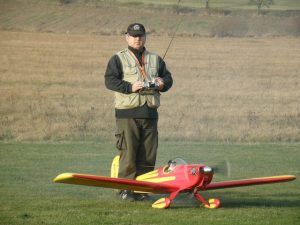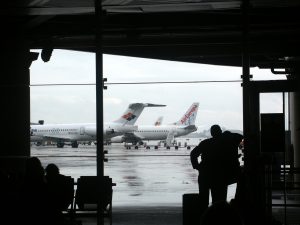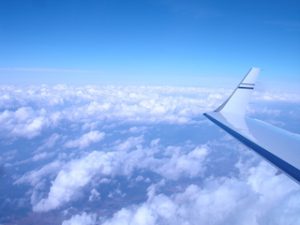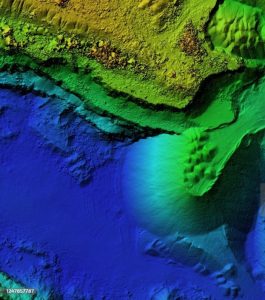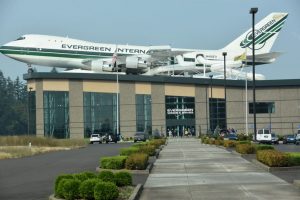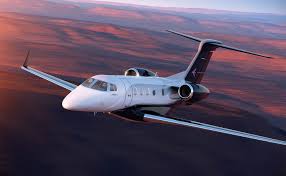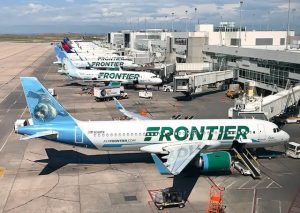A Comparison Of Airline Pilot Pay USD To CAD
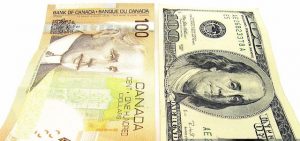 Airline pilot pay differs across countries. The United States and Canada offer unique salary ranges. Exchange rates impact the value. The conversion between USD and CAD can change the total pay worth. Pilots often compare earnings across borders. This piece breaks down the comparison using current currency values.
Airline pilot pay differs across countries. The United States and Canada offer unique salary ranges. Exchange rates impact the value. The conversion between USD and CAD can change the total pay worth. Pilots often compare earnings across borders. This piece breaks down the comparison using current currency values.
Pilot income in USD to CAD
When you compare airline pilots pay in USD to CAD, they earn higher wages than many countries. First officers start with about $60,000 per year. Captains can earn over $300,000 annually on major airlines. Many regional carriers pay less than national airlines. Benefits include healthcare and retirement savings. Flight hours, aircraft type, and airline size affect salary levels.
US pilots often receive bonuses and profit-sharing incentives. These extra payments increase yearly income. Airline mergers and union agreements also affect salary growth. Pilots flying long-haul routes earn more than domestic-only pilots. More flight hours often lead to higher compensation. Night flights and holidays can raise earnings through additional allowances.
Living costs in the United States influence how far salaries stretch. Pilots based in cities like New York or San Francisco face higher expenses. Some airlines provide relocation support to reduce the financial burden. Others assign pilots to lower-cost hubs. These factors change how pay is valued locally.
Pilot pay in Canada
Canadian airline pilots receive competitive pay by national standards. Entry-level pilots may earn around CAD 50,000 per year. With experience, captains can reach salaries over CAD 200,000 annually. The largest earnings come from long-haul international carriers. Smaller regional airlines offer lower starting salaries.
Canada’s aviation sector includes national, regional, and cargo carriers. Salary varies depending on the aircraft flown and route length. Union contracts define many wage structures in Canada. These agreements help maintain stable pay across the industry. Airline profitability also plays a role in yearly increases.
Cost of living in Canadian cities like Toronto or Vancouver remains high. Pilots must plan around housing, fuel, and taxes. Some airlines offer per diem allowances to reduce expenses during layovers. Others cover hotel stays and ground transportation. These additions improve the actual value of total compensation.
Currency conversion and real value of pay
The value of pilot salaries depends on currency strength. When converting USD to CAD, exchange rates play a major part. At times, USD holds more value, increasing the purchasing power for American pilots. For example, if 1 USD equals 1.35 CAD, a $100,000 salary converts to CAD 135,000.
In contrast, Canadian salaries converted to USD may appear smaller. If 1 CAD equals 0.74 USD, CAD 100,000 becomes USD 74,000. This difference affects how pilot earnings compare across the border. A higher nominal pay in CAD may not translate to more purchasing power in the United States.
Currency fluctuations change salary comparisons throughout the year. Pilots working abroad or spending money in another country must track conversion rates. Airlines sometimes adjust per diem payments to reflect these changes. Pilots with financial commitments in both countries need to understand this impact.
Pay growth and career progression
In both countries, pilot pay grows with experience. First officers transition to captains after meeting flight hour requirements. This promotion results in a large pay increase. Career growth also includes moving to larger aircraft or better-paying airlines. Each step brings more responsibility and higher compensation.
American pilots have access to more major carriers with global networks. This opens doors to international flights and higher salaries. Canadian pilots may face fewer openings at top-tier airlines. However, they benefit from strong union support and structured advancement systems. Both paths reward skill and seniority.
Over time, pilots accumulate benefits such as better schedules and vacation time. These non-cash perks add real value to a pilot’s career. In both countries, pilots nearing retirement often earn the highest salaries. Many also invest in retirement funds with airline matching contributions.
Work hours and scheduling impact on earnings
Pilot earnings are closely tied to flight hours. Airlines pay based on block time, which includes takeoff to landing. In the US, pilots often fly around 75 hours monthly. In Canada, the figure stays close, depending on contract rules. More hours lead to higher monthly pay.
Pilots can increase income by flying extra hours when allowed. Some airlines offer voluntary overtime during peak travel seasons. While regulations limit maximum hours, airlines build flexibility into monthly schedules. This system allows pilots to boost earnings without overwork.
Time away from base also affects pay. Many airlines give per diem for meals and lodging. In North America, this adds thousands of dollars each year. Airlines often include this in total compensation estimates. Currency strength affects the real value of these payments abroad.
Bonuses and extra income opportunities
Some airlines offer signing bonuses to attract pilots. In the US, these may range from $10,000 to $100,000. Canadian airlines offer lower bonuses, though they remain attractive. These lump sums supplement base salary and add short-term financial benefit.
Other extras include profit-sharing, stock options, and performance incentives. US carriers often offer stock-based rewards during strong financial years. Pilots benefit from airline success. Canadian airlines offer similar incentives, though the amounts vary by company. These bonuses raise pilot pay without requiring more hours.
In both countries, pilots may take on instructor roles. These positions come with extra pay and less flight time. Simulator training jobs or check pilot duties also increase earnings. Airline training programs provide consistent income sources outside of flying hours.
Taxes and take-home pay comparison
Tax structures influence how much salary pilots actually receive. US pilots pay federal, state, and sometimes local taxes. The percentage depends on where the pilot lives and works. In states with no income tax, take-home pay can be higher.
Canadian pilots pay federal and provincial income taxes. These rates can reduce take-home pay significantly. Some provinces like Quebec have higher rates than others. Social contributions also affect how much salary remains after deductions. Comparing gross and net pay shows different results.
Healthcare coverage in Canada is government-funded. This means pilots do not pay high health insurance premiums. US pilots may receive private coverage through their airline. These plans can cost thousands annually. Subtracting these costs provides a clearer view of take-home value.
Living costs and economic conditions
Living costs vary widely between regions. US pilots in rural areas face lower housing costs. Pilots in cities like Chicago or Los Angeles deal with higher expenses. These local factors change how far salaries stretch each month.
Canadian cities face similar cost differences. Vancouver and Toronto have expensive housing and fuel. Smaller cities offer a better balance between pay and expenses. Pilots often base themselves in locations where their money goes further.
Exchange rates change the impact of living costs when comparing both countries. A higher USD value increases buying power in Canada. Pilots living near the border sometimes shop or invest across countries to benefit from currency trends.
Flight types and pay structures
Pay also depends on flight type. International pilots earn more than domestic pilots. Long-haul routes offer better compensation due to hours and complexity. Both countries reward pilots who fly larger jets on intercontinental routes.
Short-haul and regional pilots earn less, though they may fly more frequently. These routes offer quicker turnarounds and fewer layovers. While less pay per flight, they offer schedule stability.
Cargo pilots enjoy steady pay and fewer passenger demands. Many fly at night and receive night duty bonuses. Both US and Canadian cargo airlines provide stable jobs and growth options. This sector remains strong in both markets.
Training costs and career entry
Becoming a pilot takes time and money. US training programs can cost over $100,000. Pilots often take loans or join flight academies linked to airlines. These programs offer tuition support and job placement after training.
In Canada, pilot training can be less expensive. Costs range from CAD 70,000 to CAD 100,000. Some airlines sponsor pilot training through cadet programs. However, entry-level salaries may delay loan repayment.
Currency conversion affects these training costs for international students. Paying in USD for Canadian training offers savings during favorable exchange periods. Similarly, Canadian students training in the US may face higher expenses depending on the exchange rate.
Retirement plans and long-term value
Many US airlines offer 401(k) plans with employer contributions. Pilots can grow retirement funds during their careers. Some also receive pensions based on years served and final salary. These benefits add significant long-term value. Canadian airlines also provide pension plans. These are often defined benefit or defined contribution systems. Employer matching helps pilots grow retirement savings. The structure varies between public and private carriers.
Currency shifts may influence the value of retirement savings if spent abroad. Pilots retiring in another country should track exchange trends. Planning around currency value helps protect the retirement lifestyle.
Licensing and work opportunities across borders
Pilot licenses differ between the United States and Canada. However, many pilots switch countries for better pay or lifestyle. Converting licenses requires exams, experience checks, and documentation. US pilots may work in Canada with the right paperwork and vice versa.
Airlines near the border sometimes hire pilots from both countries. These crews often fly across national lines. Salaries reflect the country of employment and airline base. Exchange rates influence how attractive these cross-border jobs appear. Work permits and immigration rules affect pilot movement. Some pilots seek dual citizenship to access more job options. Currency stability helps pilots decide where to work long-term.
Final comparison using USD to CAD
When converted using strong USD to CAD rates, US pilot salaries appear larger. Even mid-level US pilots earn more than senior Canadian pilots after conversion. A US captain earning $250,000 receives CAD 337,500 with a 1.35 exchange rate.
In contrast, a Canadian captain earning CAD 200,000 converts to USD 148,000 with a 0.74 rate. This gap shows why many pilots see the US market as more financially rewarding. Pay differences grow even more during strong USD periods.
However, lower healthcare costs and a stable tax system support Canadian pilots. Even if nominal salaries are lower, living benefits help balance the scales. Location preferences and lifestyle goals often shape final decisions.
Comparing the sky’s worth
Each country offers different rewards for airline pilots. The United States provides higher pay, more bonuses, and greater airline variety. Canada balances with steady pay, national healthcare, and strong union agreements. Exchange rates define how these benefits compare across borders. Currency strength adds or reduces real salary value. Pilots planning careers across North America must follow these trends. While salary levels change, dedication and skill lead to success in both nations.
